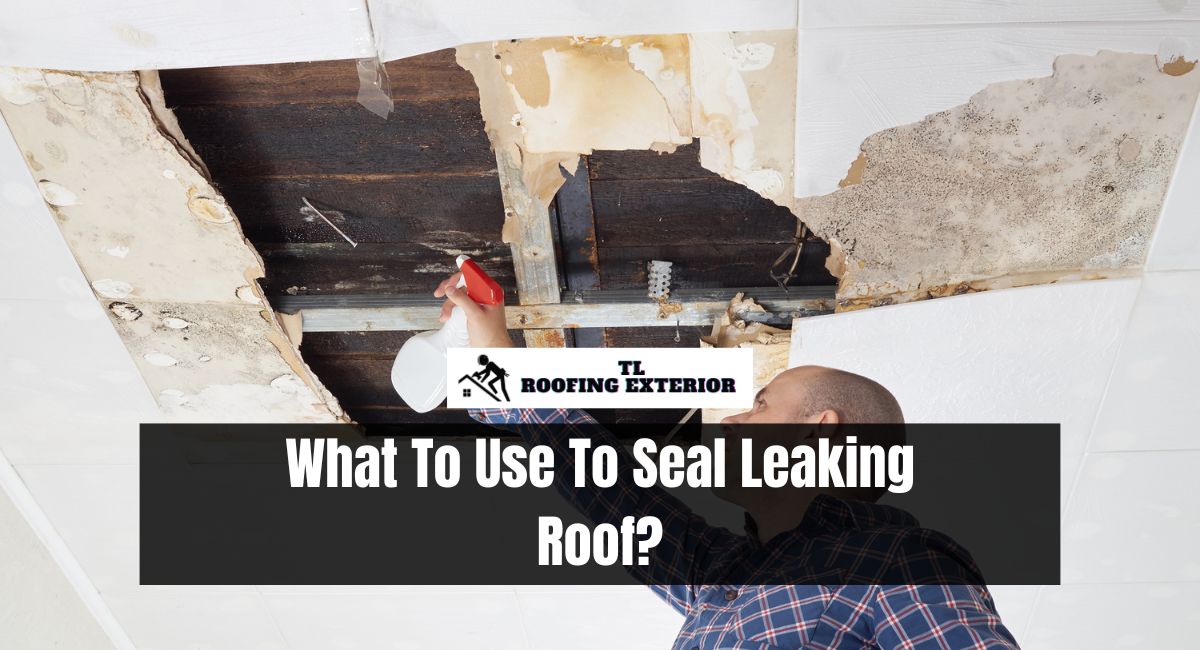A leaking roof is more than just an annoyance; if left unaddressed, it can cause significant damage to your home’s structure and interior. While long-term solutions typically involve professional repair or replacement, a variety of products are available for temporary or even semi-permanent repairs.
From sealants and adhesives to patches and liquid coatings, the market provides a variety of methods for preventing leaks.
This article will discuss the various materials that can be used to seal a leaking roof, including their efficacy, application ease, and suitability for various types of leaks.
What To Use To Seal Leaking Roof?
Sealing a leaking roof is a critical task that requires immediate attention to prevent further damage. However, it’s important to note that some leaks are indicative of more significant issues that may require professional repair or even a full roof replacement. Here are some temporary and more permanent solutions for sealing a leaking roof:
Temporary Fixes
- Roofing Cement: For minor leaks, roofing cement can be applied with a putty knife to seal holes and gaps. This temporary solution should be replaced with a more enduring one.
- Roofing Tape: Tape designed specifically for roofing can be used to seal minor leaks temporarily.
- Tarp Covering: In the event of extensive damage, a tarp can be used to cover the afflicted area until professional repairs can be completed.
- Rubberized Sealant: Spray-on sealants can temporarily repair minor leaks, but they are only a quick fix.
More Permanent Solutions
- Asphalt Shingles: If the leak is caused by missing or damaged shingles, the most effective long-term solution is to replace them.
- Metal Flashing: Leaks commonly occur around chimneys, vents, and roof intersections due to damaged flashing. Typically, replacing the flashing is the most durable solution.
- Elastomeric Coating: This is a more permanent sealant that can be applied to the complete roof surface in the case of widespread leaks that do not indicate total roof failure.
- Polyurethane Foam: The entire surface can be sprayed with polyurethane foam for flat or low-slope roofs to seal leakage and add insulation.
Professional Solutions
- Roof Inspection: For persistent or severe roof leakage, a professional roof inspection is advised to determine the extent of the damage and the best course of action.
- Roof Replacement: In extreme cases where the roof is old or severely damaged, a complete roof replacement may be the most effective solution to prevent future leaks.
Important Considerations
- Safety First: Roof repairs can be hazardous. Always observe proper safety precautions, including the use of a robust ladder and slip-resistant footwear.
- Material Compatibility: Ensure that any sealant or replacement material is compatible with the roofing material you currently have.
- Weather Conditions: Some sealants adhere properly only in dry weather due to sailing conditions. Always consult the weather forecast prior to undertaking any roofing repair work.
- Professional Help: For significant breaches or when unsure of the cause or extent of the damage, it is always advisable to seek professional assistance.
- Local Building Codes: Ensure that all repairs meet local building codes and regulations.
Warranty and Insurance
- Check Your Warranty: If your roof is still under warranty, attempting to fix it yourself could void the warranty. Always check the terms before undertaking any repairs.
- Insurance Claims: Depending on the cause of the leak, your homeowner’s insurance may cover the cost of repairs. Document the damage and consult your insurance company before proceeding with any work.
By taking a comprehensive approach to roof leaks, from temporary fixes to long-term solutions and preventative measures, you can better manage your roof’s integrity and your home’s safety.
Conclusion
Sealing a leaking roof is a crucial task that demands immediate attention and the selection of the appropriate materials. Silicone and acrylic sealants are excellent for small leaks and fast repairs, but elastomeric coatings and modified bitumen patches may provide more robust solutions for larger or more complex leaks.
The key is to accurately evaluate the nature and extent of the leak and select a sealing material suitable for your particular roofing material and climate conditions. Despite the fact that do-it-yourself solutions can provide temporary respite for significant leaks, it is often advisable to consult roofing professionals to ensure a permanent fix.
Read More: What Is Fiberglass Used For In Houses?
